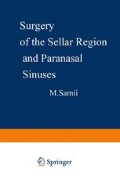Abstract
Conventional histological criteria such as cellular and nuclear polymorphism and rarely observed mitotic figures do not sufficiently explain the biological behavior of pituitary adenomas. Although pituitary adenomas are generally described as benign tumors, they show locally invasive growth which can be demonstrated surgically, radiologically, and histologically (Jefferson 1972; Martins et al. 1965; Landolt 1980; Selman et al. 1986; Scheithauer et al. 1986). Invasive growth has been related to distinct ultrastructural and secretory patterns (Kovacs 1984), to immunohistological findings (Scheithauer et al. 1986), and to tumor size (Selmann et al. 1986). Invasive growth influences the surgical outcome (Balagara et al. 1981; Wilson 1984) as well as the postoperative management of these patients in terms whether radiation therapy should be given or not (Ross and Wilson 1988).
Access this chapter
Tax calculation will be finalised at checkout
Purchases are for personal use only
Preview
Unable to display preview. Download preview PDF.
References
Balagara S, Derome P, Guiot G (1981) Acromegaly: analysis of 132 cases treated surgically. Neurosurg 8: 413–416
Cooper EH, Frank GL, Wright DH (1966) Cell proliferation in Burkitt tumors. Eur J Cancer 2: 377–384
Gerdes J, Schwab U, Lemke H, Stein H (1983) Production of a mouse monoclonal antibody reactive with a human nuclear antigen associated with cell proliferation. Int J Cancer 31: 13–20
Gerdes J, Lemke H, Baisch H, Wacker HH, Schwab U, Stein H (1984) Cell cycle analysis of a cell proliferation-associated human nuclear antigen defined by monoclonal antibody Ki 67. J Immunol 133: 1710–1715
HoshinoT, NagashimaT, MurovicJA (1986) In situ cell kinetics studies on human neuroectodermal tumors with bromodeoxyuridine labeling. J Neurosurg 64: 453–459
Jefferson G (1972) The invasive adenomas of the anterior pituitary. Thomas, Springfield, IL, pp 56–60
Johnson HA, Haymaker WE, Rubini JR (1960) A radioautographic study of a human brain and glioblastoma multiforme after in vivo uptake of tritiated thymidine. Cancer 13: 636–642
Knosp E, Krisch K, Schmidbauer M, Budka H (1988) Immunologischer Hormonnachweis bei Hypophysenadenomen: Korrelation von Serumhormonbefunden mit immunzytochemischen Hormonbefund am Tumorschnitt. Wien Klin Wochenschr 100: 322–325
Knosp E, Kitz K, Perneczky A (1989) Proliferation activity in pituitary adenomas: measurement by monoclonal antibody Ki-67. Neurosurg 25: 927–930
Kovacs K (1984) Light and electron microscopic pathology of pituitary tumors: immunhistochemistry. In: McL Black P, Zervas NT, Ridgeway EC, Martin JB (eds). Secretory tumors of the pituitary gland. Raven, New York, pp 365–375
Landolt AM (1980) Biology of pituitary microadenomas. In: Faglia G, Giovanelli MA, Mac Leod RM (eds). Pituitary microadenomas. Academic Press London, pp 107–122
Landolt AM, ShibataT, KleihuesP (1987) Growth rate of human pituitary adenomas. J Neurosurg 67: 803–806
Martins AN, Hayes GJ, Kempe LG (1965) Invasive pituitary adenomas. J Neurosurg 22: 268–276
Ross DA, Wilson CB (1988) Results of transsphenoidal microsurgery for growth hormonesecreting pituitary adenomas in a series of 214 patients. J Neurosurg 68: 854–867
Selman WR, Laws ER, Scheithauer BW, Carpenter SM (1986) The occurrence of dural invasion in pituitary adenomas. J Neurosurg 64: 402–408
Scheithauer BW, Kovacs KT, Laws ER, Randall RV (1986) Pathology of invasive pituitary tumors with special reference to functional classification. J Neurosurg 65: 733–745
Schloffer H (1907) Erfolgreiche Operation eines Hypophysentumors auf nasalem Wege. Wien Klin Wochenschr 20: 621–624
Wilson CHB (1984) A decade of pituitary microsurgery. The Herbert Olivecrona lecture. J Neurosurg 61: 814–834
Author information
Authors and Affiliations
Editor information
Editors and Affiliations
Rights and permissions
Copyright information
© 1991 Springer-Verlag Berlin Heidelberg
About this paper
Cite this paper
Knosp, E., Kitz, K., Perneczky, A., Korn, A. (1991). The Growth Rate in Pituitary Adenomas: Measurement by Proliferation Marker Ki 67. In: Samii, M. (eds) Surgery of the Sellar Region and Paranasal Sinuses. Springer, Berlin, Heidelberg. https://doi.org/10.1007/978-3-642-76450-9_45
Download citation
DOI: https://doi.org/10.1007/978-3-642-76450-9_45
Publisher Name: Springer, Berlin, Heidelberg
Print ISBN: 978-3-642-76452-3
Online ISBN: 978-3-642-76450-9
eBook Packages: Springer Book Archive

